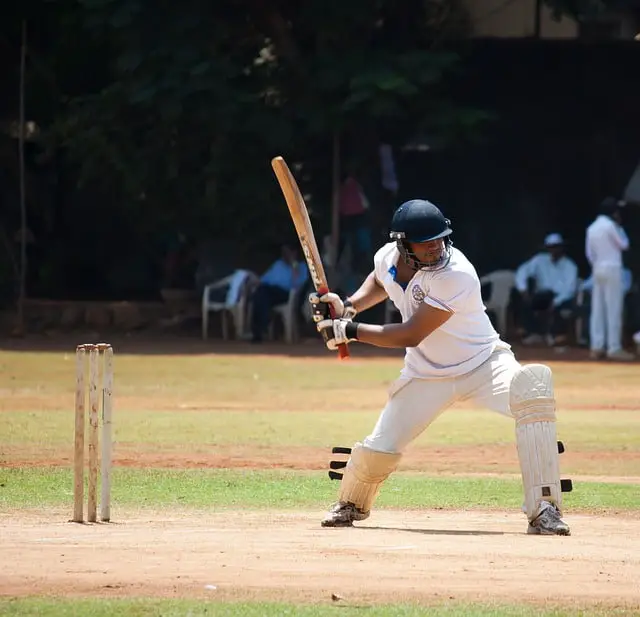When selecting a cricket bat, it’s crucial to consider every component, including the handle. The handle material plays a significant role in determining the bat’s performance, feel, and durability.
In this article, we will explore the pros and cons of different cricket bat handle materials to help you make an informed decision when choosing your ideal bat.
English Willow Handles
English willow handles are the most common choice for cricket bats. They offer several advantages that have made them the preferred option for many players.
English Willow Handle Pros
- Superior Shock Absorption: English willow handles possess excellent shock absorption properties, reducing the impact of ball contact and providing a comfortable feel.
- Flexibility: The natural flexibility of English willow handles allows for enhanced maneuverability, enabling players to generate power and control in their shots.
- Lightweight: Willow handles tend to be lightweight, offering improved bat speed and ease of use, especially for players with a more attacking style.
- Traditional Feel: Many cricketers appreciate the traditional feel and aesthetics of English willow handles, which are highly regarded in the sport.
English Willow Handle Cons
- Durability: While English willow handles offer great performance, they can be less durable compared to other materials. They may require more frequent maintenance and replacement if subjected to excessive wear and tear.
Cane Handles
Cane handles, often referred to as “cane-sprung” handles, were popular in traditional cricket bat designs. Nowadays, they are less common but still have their own merits.
Cane Handle Pros
- Excellent Vibration Dampening: Cane handles are renowned for their exceptional vibration dampening properties, reducing discomfort and potentially preventing injuries caused by ball impact.
- Enhanced Control: The slight flex in cane handles allows for better control and shot placement, making them a favorite among batsmen who value precision.
- Classic Appeal: For players who appreciate the traditional aesthetics and feel, cane handles evoke a sense of nostalgia and authenticity.
Cane Handle Cons
- Limited Availability: Cane handles are less commonly found in modern cricket bat designs. Finding a bat with a cane handle may require more effort or custom orders.
- Potential for Moisture Absorption: Cane handles have the tendency to absorb moisture, which can compromise their performance and durability over time if not adequately maintained.
Composite Handles
In recent years, cricket bat manufacturers have introduced composite handles, which combine different materials to offer unique benefits.
Composite Handle Pros
- Enhanced Durability: Composite handles are known for their durability and ability to withstand frequent use and impact, making them a long-lasting option.
- Vibration Dampening: Many composite handles incorporate technologies that further reduce vibrations, enhancing comfort and minimizing the risk of injury.
- Customizable Feel: Composite handles can be engineered with specific stiffness or flex patterns, allowing players to tailor the bat’s feel to their preference.
Composite Handle Cons
- Additional Weight: Composite handles tend to be slightly heavier than their counterparts, which may affect bat speed and maneuverability to some extent.
- Less Traditional Aesthetics: For those who prefer a more traditional look, composite handles may not provide the same classic appeal as willow or cane handles.
Cricket Bat Handle Comparison By Manufacturer
It’s challenging to provide an objective ranking of cricket bat manufacturers specifically based on handle materials but we can at least try. The quality and performance of cricket bats can vary within each manufacturer’s range, and individual preferences play a significant role in determining the “best” cricket bat.
Here is a table that highlights some prominent cricket bat manufacturers and their offerings in terms of handle materials:
| Manufacturer | English Willow Handle Models | Cane Handle Models | Composite Handle Models |
|---|---|---|---|
| Gray-Nicolls | Classic Collection, Powerbow Range | Limited options | Limited options |
| Gunn & Moore | Multiple models available | Limited options | Limited options |
| Kookaburra | Multiple models available | Limited options | Ghost Pro, Kahuna Pro, Blaze Pro |
| New Balance | DC, TC, TC 1260 | Limited options | Limited options |
| Spartan | Limited options | Limited options | CG, MSD, CHAMP |
| SS Ton | Ton Reserve Edition, Player Edition | Limited options | Limited options |
| MRF | Genius, Virat Kohli Signature, Limited Editions | Limited options | Limited options |
| SG | Sunny Tonny, RSD Xtreme | Limited options | Limited options |
| Puma | Limited options | Limited options | EvoPower, Calibre 6000 |
| Adidas | Limited options | Limited options | XT, Libro, Incurza |
Please note that the availability of specific handle materials may vary within each manufacturer’s product lineup. It’s recommended to research and consult with experts, try out different bats, and consider individual preferences, playing style, and budget when making a decision.
Final Thoughts
When choosing a cricket bat, the handle material is a crucial consideration that can significantly impact your performance and playing experience. Each handle material has its pros and cons, so it’s essential to assess your playing style, preferences, and priorities to find the right fit.
English willow handles offer an ideal balance of shock absorption, flexibility, and lightweight feel, making them a popular choice among players. Cane handles, with their vibration dampening properties and classic appeal, are favored by those seeking a traditional experience. Composite handles, on the other hand, provide durability, customizable feel, and advanced technologies for enhanced performance.
Ultimately, the best handle material for your cricket bat is subjective and dependent on your individual needs and preferences. It’s recommended to try out different handle materials before making a decision, ensuring that the bat feels comfortable and suits your playing style.

